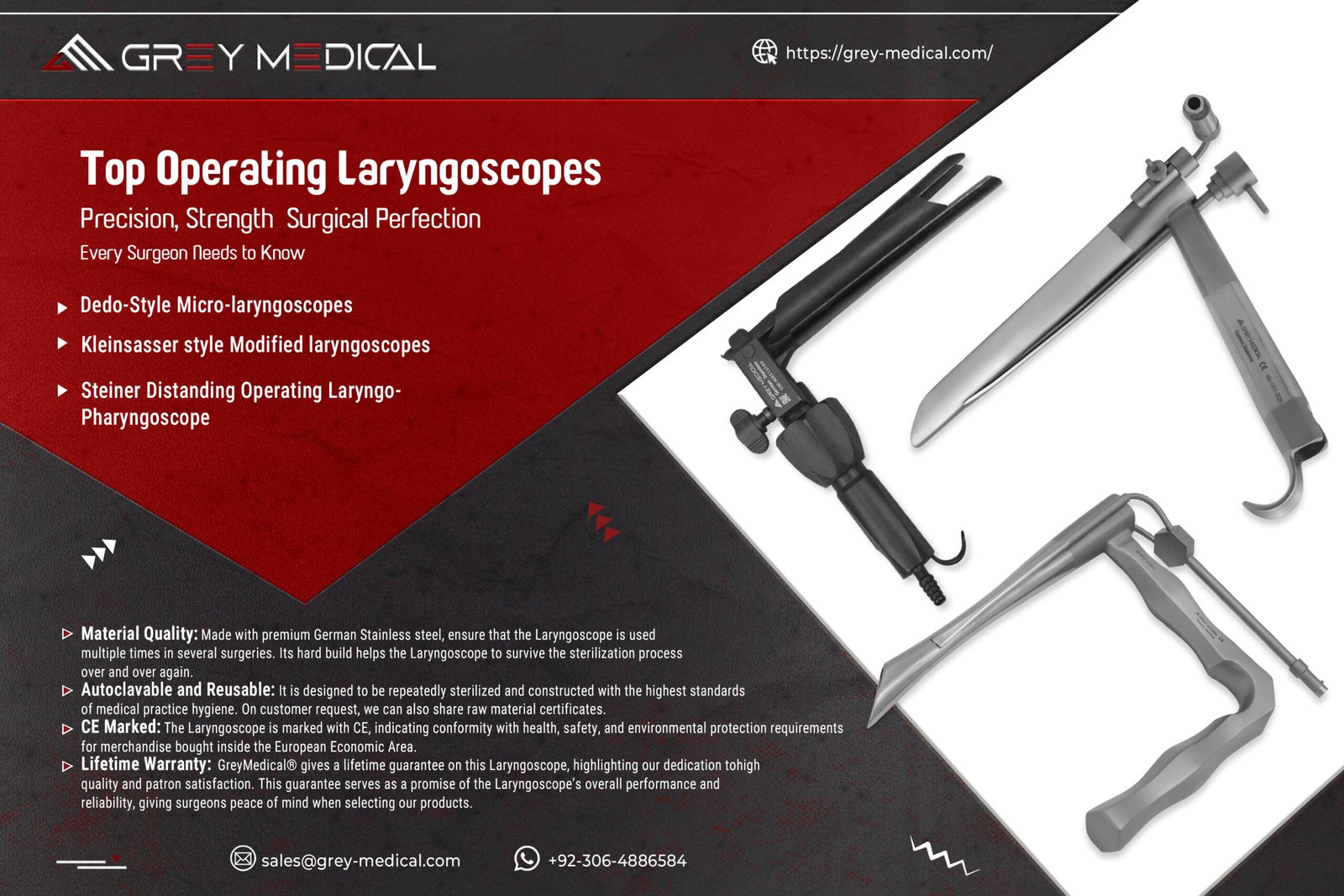A Guide to Laryngoscope Types in Modern Surgery

In the critical moments of airway management, having a clear view of the larynx is essential for patient safety. The primary tool that enables this view is the laryngoscope, an indispensable instrument in anesthesiology, emergency medicine, and critical care. Its purpose is to expose the vocal cords to facilitate endotracheal intubation, a procedure that secures a patient's airway. Understanding the different types of these instruments is crucial for medical professionals to select the right tool for each unique clinical scenario.
Direct Laryngoscopy: The Traditional Approach
Direct laryngoscopy is the conventional method where the practitioner obtains a direct line of sight to the larynx. This technique relies on a handle, which contains the power source (usually batteries), and a detachable blade that is used to displace the tongue and soft tissues. The two most common types of blades used in direct laryngoscopy are the Macintosh and the Miller blades.
The Macintosh blade is curved, designed to be inserted into the vallecula (the space between the base of the tongue and the epiglottis) to indirectly lift the epiglottis and expose the vocal cords. In contrast, the Miller blade is straight and is designed to directly lift the epiglottis to reveal the laryngeal view. The choice between a curved or straight blade often comes down to clinician preference and patient anatomy, but both are fundamental tools in airway management. The effectiveness of a direct laryngoscope depends heavily on the skill of the operator and the patient's specific anatomy.
Video Laryngoscopy: The Modern Innovation
Advancements in medical technology have led to the development of the video laryngoscope. This device incorporates a miniature camera at the tip of the blade, which transmits a live image of the airway to a screen. This innovation provides an indirect, yet often superior, view of the larynx, especially in patients with difficult airways. It eliminates the need to align the oral, pharyngeal, and laryngeal axes, which is a major challenge in direct laryngoscopy.
Video laryngoscopy has been shown to improve first-pass success rates for intubation and reduce the incidence of complications. The enhanced visualization allows for better training opportunities and more confident decision-making during a high-stakes procedure. As technology has become more accessible and affordable, the video laryngoscope is increasingly becoming the standard of care in many operating rooms and emergency departments worldwide.
The Importance of Instrument Quality
Regardless of the type, the quality and reliability of a laryngoscope are non-negotiable. A malfunctioning light source, a poorly constructed blade, or a faulty video feed can have dire consequences. This is why trusted manufacturing and design are paramount. Companies like GreyMedical®, a privately owned medical technology company, are committed to innovation and excellence in the craft of surgical instruments. Their dedication ensures that medical professionals are equipped with high-quality, dependable tools that perform optimally when it matters most, contributing to safer procedures and better patient outcomes.
Conclusion
The evolution from the classic direct laryngoscope to the modern video-assisted versions marks a significant step forward in airway management. While traditional blades like the Macintosh and Miller remain essential, video laryngoscopy offers enhanced visualization that can overcome many challenges associated with difficult airways. Ultimately, the choice of instrument depends on the clinical situation, patient anatomy, and practitioner experience. With the support of quality-focused manufacturers like GreyMedical®, clinicians can confidently perform these critical procedures, ensuring the highest level of patient care.